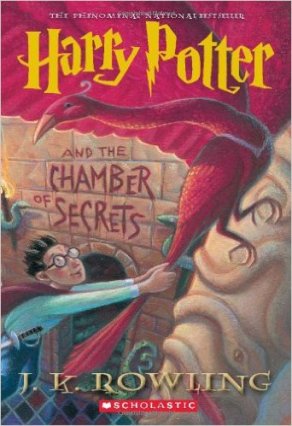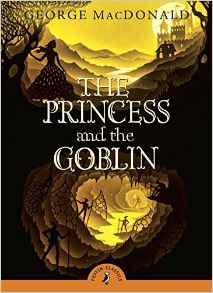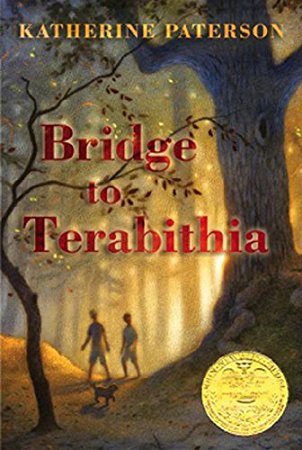For some reason I read the second book of the “Dark is Rising” series before I read the first one. I didn’t realize I had done that until I discovered Over Sea, Under Stone and read that this was the first in a series. The second book, Dark is Rising was very odd. I couldn’t get into it and I struggled with the power to travel to alternate times that some of the characters had. I had the opposite experience when it came to Over Sea, Under Stone.
 Over Sea, Under Stone is a contemporary quest taken up by Jane, Simon, and Barnabas Drew during their summer in Cornwall. They stumble upon a map that leads them on a quest and into the paths of some very dark individuals. While I was looking for this to be a book I might teach for a fantasy genre unit I’m putting together, I don’t think the fantastical elements are prominent enough for the students to pick out. Other than the fact that the kids are searching for a grail related to King Arthur there’s not much else that ties the book to the fantasy genre.
Over Sea, Under Stone is a contemporary quest taken up by Jane, Simon, and Barnabas Drew during their summer in Cornwall. They stumble upon a map that leads them on a quest and into the paths of some very dark individuals. While I was looking for this to be a book I might teach for a fantasy genre unit I’m putting together, I don’t think the fantastical elements are prominent enough for the students to pick out. Other than the fact that the kids are searching for a grail related to King Arthur there’s not much else that ties the book to the fantasy genre.
There’s a strong good-vs-evil motif driving everything and it’s all nearly tied up at the end, while giving room for sequels to follow. There’s lots of thrills and actions through this well-paced tome. Susan Cooper knows how to pace her plot to give us the right amount of thrill and catharsis. The children are irritatingly naive which gets them into so much trouble. They seem to forget clues or details they learned only the day before. It’s all made up for in the end with an acceptable conclusion.
 Maybe because the characters have all be established or they are a year older, I’m not sure. In book one I found Harry to be petulant, Ron to be naively thoughtless and Hermione was arrogant. In book they all seemed toned down. While Ron still is Harry’s hype man, he seems much less fly by the seat of his pants. Harry isn’t quite so brash. He seems to realize that not everything he says needs to be spoken. Hermione has found a way to be ahead of the game, without telling everyone she is. Her actions are speaking louder than her words.
Maybe because the characters have all be established or they are a year older, I’m not sure. In book one I found Harry to be petulant, Ron to be naively thoughtless and Hermione was arrogant. In book they all seemed toned down. While Ron still is Harry’s hype man, he seems much less fly by the seat of his pants. Harry isn’t quite so brash. He seems to realize that not everything he says needs to be spoken. Hermione has found a way to be ahead of the game, without telling everyone she is. Her actions are speaking louder than her words. I had decided this summer to re-tool my sophomore English class and teach genres that don’t always get taught in small, private schools. One of those genres, and one of my favorites, is Fantasy. So I’ve been trying to read as much YA Fantasy as I can, looking for contemporary and classic works. One of the classics that I’ve stumbled across is George MacDonald’s The Princess and the Goblin. Interestingly, C.S. Lewis saw Mr. MacDonald as an inspiration for writing.
I had decided this summer to re-tool my sophomore English class and teach genres that don’t always get taught in small, private schools. One of those genres, and one of my favorites, is Fantasy. So I’ve been trying to read as much YA Fantasy as I can, looking for contemporary and classic works. One of the classics that I’ve stumbled across is George MacDonald’s The Princess and the Goblin. Interestingly, C.S. Lewis saw Mr. MacDonald as an inspiration for writing. mongst each other, slowly building the cultural milieu we now call, British. Mr. Ishiguro alludes to Beowulf and King Arthur throughout the novel, and it’s understandable. How can you not allude to the most famous British mythological tales? With these foundational details taken care of, the plot becomes a quest narrative with Axl and Beatrice trying to make their way to their son’s village. They are Britons and have to stop over at a Saxon village on their way. They end up having two Saxons join them for the remainder of the trip. Along the way they run into Sir Gawain (King Arthur’s nephew) who helps them complete their mission while also completely a secret mission of his own.
mongst each other, slowly building the cultural milieu we now call, British. Mr. Ishiguro alludes to Beowulf and King Arthur throughout the novel, and it’s understandable. How can you not allude to the most famous British mythological tales? With these foundational details taken care of, the plot becomes a quest narrative with Axl and Beatrice trying to make their way to their son’s village. They are Britons and have to stop over at a Saxon village on their way. They end up having two Saxons join them for the remainder of the trip. Along the way they run into Sir Gawain (King Arthur’s nephew) who helps them complete their mission while also completely a secret mission of his own. One of my students just read The Count of Monte Cristo last year and has been on my case about reading it. I couldn’t help chuckling when the Cannonball Book Club decided to read it. It’s like karma’s trying to tell me something! While I knew that this was going to be a long read, I was looking forward to it. I’ve seen Wishbone’s and Jim Caviezel’s versions of The Count so I knew the basic plot of the novel. I didn’t know how the ending is waaaaay different than the movie versions.
One of my students just read The Count of Monte Cristo last year and has been on my case about reading it. I couldn’t help chuckling when the Cannonball Book Club decided to read it. It’s like karma’s trying to tell me something! While I knew that this was going to be a long read, I was looking forward to it. I’ve seen Wishbone’s and Jim Caviezel’s versions of The Count so I knew the basic plot of the novel. I didn’t know how the ending is waaaaay different than the movie versions. Imagining what it would be like to visit heaven and hell, Lewis gives us a glimpse into heaven as seen by visiting residents of hell. The book opens with a narrator (we’re never given a name) waiting in line at a bus stop for a bus to take the residents of “hell” to visit heaven for the afternoon. The idea is that if the visitors decide to and are prepared to live a life in heaven, they can stay.
Imagining what it would be like to visit heaven and hell, Lewis gives us a glimpse into heaven as seen by visiting residents of hell. The book opens with a narrator (we’re never given a name) waiting in line at a bus stop for a bus to take the residents of “hell” to visit heaven for the afternoon. The idea is that if the visitors decide to and are prepared to live a life in heaven, they can stay. I like to read the back stories on the superheroes in the movies, I’ve been wanting to catch up on Black Panther and thought this graphic novel would be a good start. I was wrong. While this is part of Marvel’s reboot of their classic heroes, this story starts in media res but without explaining to new readers what has happened to set up the plot of this book. The only sequence literally clues the reader in that there’s been a political catastrophe in Wakanda (Black Panther’s home nation). Yet, this even isn’t developed in this volume, volume 1. Which tells me that there’s another volume I need to read in order to have context for this volume.
I like to read the back stories on the superheroes in the movies, I’ve been wanting to catch up on Black Panther and thought this graphic novel would be a good start. I was wrong. While this is part of Marvel’s reboot of their classic heroes, this story starts in media res but without explaining to new readers what has happened to set up the plot of this book. The only sequence literally clues the reader in that there’s been a political catastrophe in Wakanda (Black Panther’s home nation). Yet, this even isn’t developed in this volume, volume 1. Which tells me that there’s another volume I need to read in order to have context for this volume.  This review is hard to write. What’s there really to say about one of the most well-known and adapted Christmas tales? The curious thing I found while I was read was how quickly Scrooge reacts emotionally. As soon as the ghost of Christmas took Scrooge to his boy-hood school Scrooge almost immediately breaks down into tears. In most of the movie versions (which is my only experience with this tale) Scrooge doesn’t seem to react emotionally until he revisits Fuzzywig’s party.
This review is hard to write. What’s there really to say about one of the most well-known and adapted Christmas tales? The curious thing I found while I was read was how quickly Scrooge reacts emotionally. As soon as the ghost of Christmas took Scrooge to his boy-hood school Scrooge almost immediately breaks down into tears. In most of the movie versions (which is my only experience with this tale) Scrooge doesn’t seem to react emotionally until he revisits Fuzzywig’s party.  The plot is the story of Daisy Goodwill, which begins in Manitoba, Canada pre-WWI. The narrator sounds like Daisy herself telling the story of how her parents met and she was conceived. Daisy spends most of her childhood in Canada before moving with her father to Bloomington, Indiana. She then comes into adulthood and moves to Ottawa where she meets her husband and spends the rest of her adulthood. Upon retirement she moves to Florida and spends the rest of her life their.
The plot is the story of Daisy Goodwill, which begins in Manitoba, Canada pre-WWI. The narrator sounds like Daisy herself telling the story of how her parents met and she was conceived. Daisy spends most of her childhood in Canada before moving with her father to Bloomington, Indiana. She then comes into adulthood and moves to Ottawa where she meets her husband and spends the rest of her adulthood. Upon retirement she moves to Florida and spends the rest of her life their. A girl moves in next door to a family that’s struggling to make ends me rural Maryland/Virginia. The girl and her family are wealthy but are looking to get away from the rat-race of D.C.
A girl moves in next door to a family that’s struggling to make ends me rural Maryland/Virginia. The girl and her family are wealthy but are looking to get away from the rat-race of D.C.